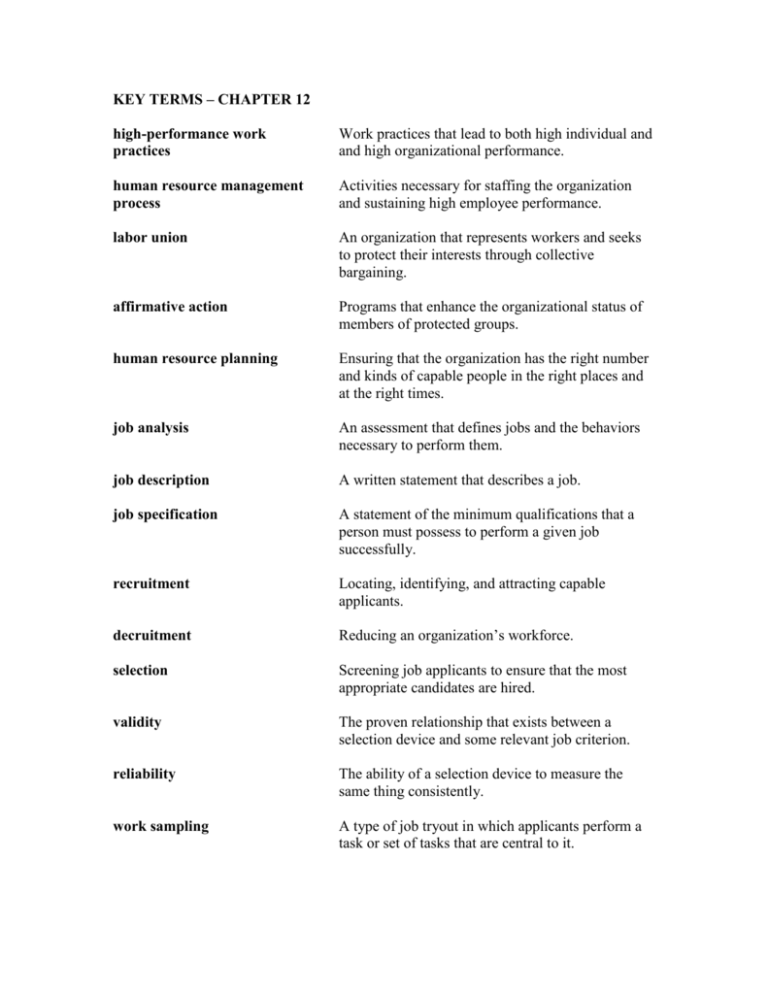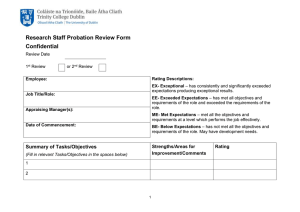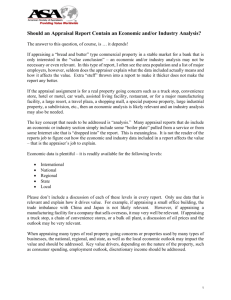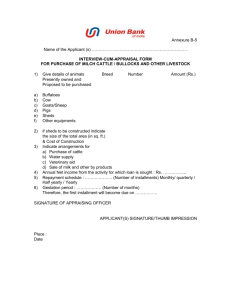KEY TERMS – CHAPTER 12
advertisement

KEY TERMS – CHAPTER 12 high-performance work practices Work practices that lead to both high individual and and high organizational performance. human resource management process Activities necessary for staffing the organization and sustaining high employee performance. labor union An organization that represents workers and seeks to protect their interests through collective bargaining. affirmative action Programs that enhance the organizational status of members of protected groups. human resource planning Ensuring that the organization has the right number and kinds of capable people in the right places and at the right times. job analysis An assessment that defines jobs and the behaviors necessary to perform them. job description A written statement that describes a job. job specification A statement of the minimum qualifications that a person must possess to perform a given job successfully. recruitment Locating, identifying, and attracting capable applicants. decruitment Reducing an organization’s workforce. selection Screening job applicants to ensure that the most appropriate candidates are hired. validity The proven relationship that exists between a selection device and some relevant job criterion. reliability The ability of a selection device to measure the same thing consistently. work sampling A type of job tryout in which applicants perform a task or set of tasks that are central to it. assessment centers Evaluating managerial potential through job simulation activities. realistic job preview (RJP) A preview of a job that provides both positive and negative information about the job and the company. orientation Introducing a new employee to his or her job and the organization. performance management system Establishes performance standards that are used to evaluate employee performance. written essay Appraising performance through a written description. critical incidents Appraising performance by focusing on the critical job behaviors. graphic rating scales Appraising performance using a rating scale on a set of performance factors. behaviorally anchored rating scales (BARS) Appraising performance using a rating scale on examples of actual job behavior. multiperson comparisons Appraising performance by comparing it with others’ performance. 360 degree feedback Appraising performance by using feedback from supervisors, employees and co-workers. skill-based pay A pay system that rewards employees for the job skills they can demonstrate. variable pay A pay system in which an individual’s compensation is contingent on performance. career A sequence of positions held by a person during his or her lifetime. downsizing The planned elimination of jobs in an organization. sexual harassment Any unwanted action or activity of a sexual nature that explicitly or implicitly affects an individual’s employment, performance, or work environment. family-friendly benefits Benefits which accommodate employees’ needs for work-life balance.









